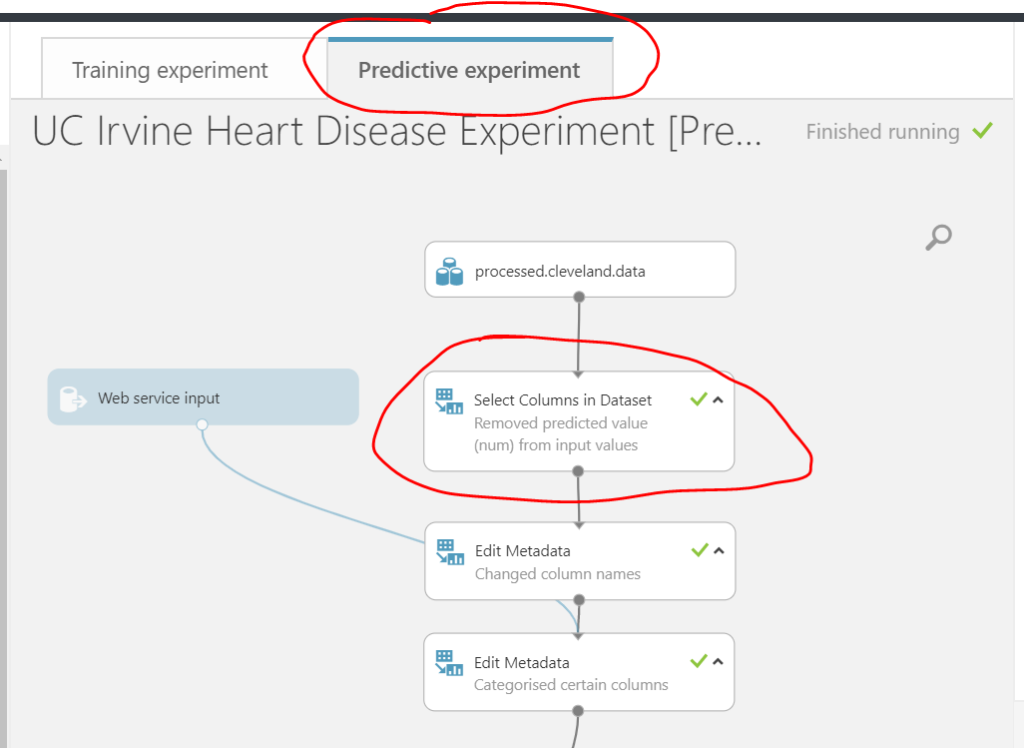If computers continue to obey Moore’s Law, they are likely to overtake human intelligence sometime in the next hundred years.
In my previous blog post I showed you how a machine learning model can be built to predict heart disease. In this follow up post, I’ll show you how to use the model to make heart disease predictions. I encountered a problem whilst deploying the machine learning model. I’ll show you what the problem was and how I solved it. Finally, I’ll wrap up with a few thoughts on all the machine learning hype.
This form allows you to interact with the heart disease model. The model was trained using machine learning. Fill in the form with various values and click the test button at the bottom to receive a prediction from the model.
I encountered a problem while deploying the machine learning model. I found that the service was asking the user to input the value to be predicted. Not very useful! I overcame this by inserting an additional “select columns in data-set” module to the predictive experiment only (not the original training experiment). I added this step in-between the initial data module and the first edit metadata module. The new “select columns in data-set” module simply selects all the columns from the initial data, less the column to be predicted (i.e. whether the patient has heart disease). In this way, only the input / feature values are collected from the user and sent to the model, in order to output the desired prediction.

Any technology which can be fused together with a human to achieve something greater than the sum of the parts is very interesting. Humans have been using tools for millions of years, it’s a characteristic which has been fundamental to our evolution.
The way we use computers is a relatively new change, in evolutionary terms. For the last eighty years we’ve been using computers to help us solve problems. The traditional model has been input + program = output. For example fill in a form online + application programmed by a human = shopping ordered. Machine learning works differently: input + output = program. For example, provide the computer with some data on heart disease + tell it which values in the data represent whether the patient has heart disease or not = a machine learning model (program) which can be use in the future to predict whether future patients have heart disease. No programming needed by a human in the machine learning case. This is know as supervised machine learning.
According to Moore’s Law, computers double in speed and memory capacity every eighteen months. This has held true since 1965. If the trend continues, according to Stephen Hawking, computers are likely to overtake human intelligence in the next hundred years. While there are many doubters, it is possible for parents to create offspring that are more intelligent than themselves (think Einstein’s parents). Therefore it is demonstrably possible for a human to create an intelligence greater than itself.
The prospect of sentient AI is both thrilling and terrifying. We need to make sure we prepare for & use it wisely!
Be First to Comment